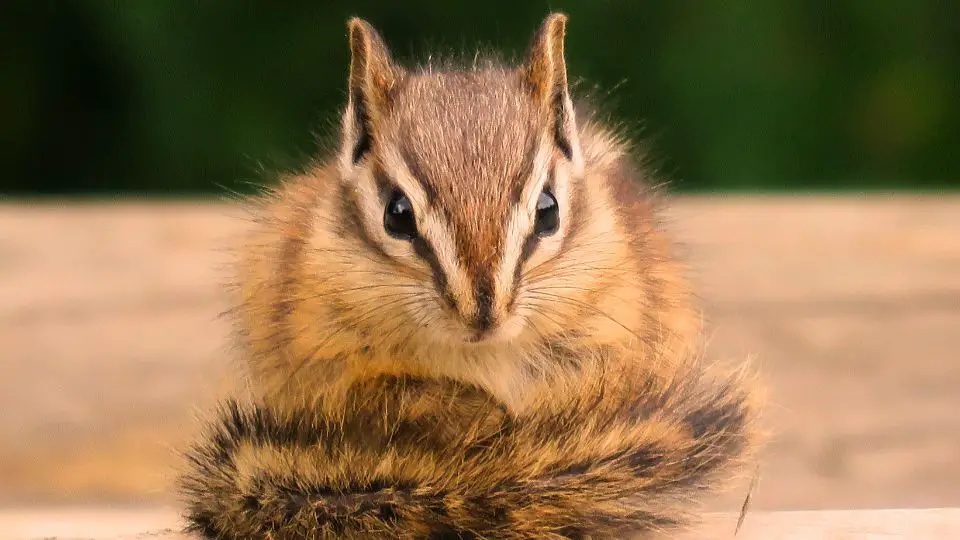Chipmunks make deep, complex holes for safety, warmth, and storing food. The holes they create are called burrows. The burrows have more than one entrance. The entrance points are found above ground, while the rest of the burrow is underground.
Read on to educated yourself on their burrows and understand the type of chipmunk problem you may be having.
Table of Contents
What kind of hole does a chipmunk make?
Chipmunks create plunge holes in the burrows, which are tunnels that lead directly down underground. There is usually the main nesting area where the chipmunk sleeps.
Chipmunks make drainage tunnels at the bottom to keep the burrow dry. They also create a room in the burrow designated for giving birth.
Chipmunks are solitary creatures and live alone in their burrows. A female chipmunk with pups is typically the only time a chipmunk won’t live alone.
Chipmunks usually have more than one burrow. Some of the burrows are shallow and simple and not used regularly. These shallow burrows are used for a quick hiding spot while foraging.
From a human’s perspective, a chipmunk burrow will appear as a flat hole in the ground. The hole will be about two to three inches in diameter. This hole you see may be the burrow entrance or exit point.
Chipmunks prefer to dig holes near coverings so that these holes will be found near natural foundations or manmade foundations. Chipmunks will burrow near or around rocks, shrubs, houses, and wooden areas.
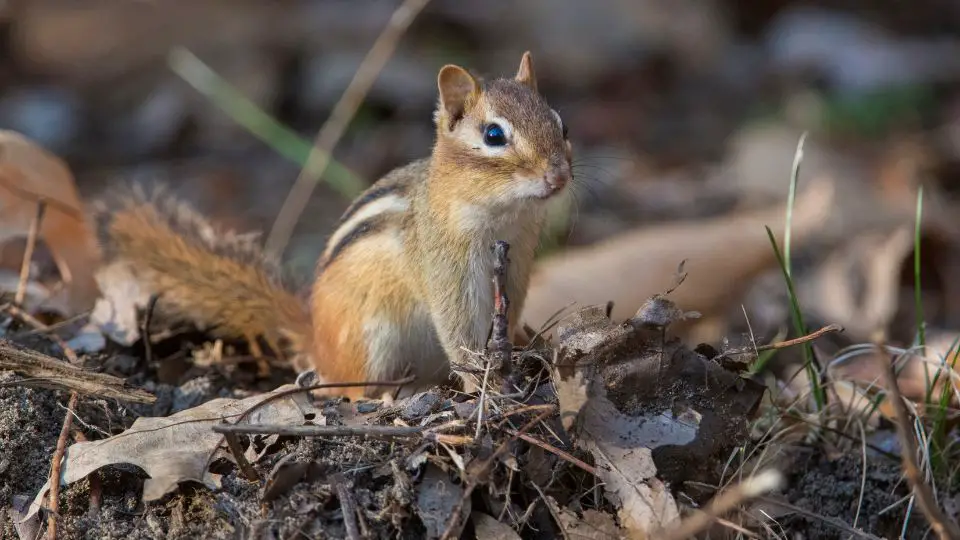
Do chipmunks burrow?
Burrowing is digging a small hole or tunnel. Chipmunks are one of the many small creatures that burrow. Rabbits, groundhogs, and moles are some of the other animals that make underground burrows.
Chipmunks dig to make their burrows. To begin, they dig straight down before creating tunnels and pockets in the ground.
Chipmunks have pouches in their cheeks for storage. They use these pouches to collect dirt while they dig. When the pouches are full, they will emerge from their digging to disperse the dirt on the ground.
How deep is a chipmunk burrow?
Impressively, chipmunk burrows can be three feet deep. Their burrows can be up to thirty feet long. Chipmunk tunnels vary in size and depth.
Chipmunks are constantly working on and expanding their burrows. A chipmunk will also take claim of an abandoned burrow, making it their own and building more tunnels.
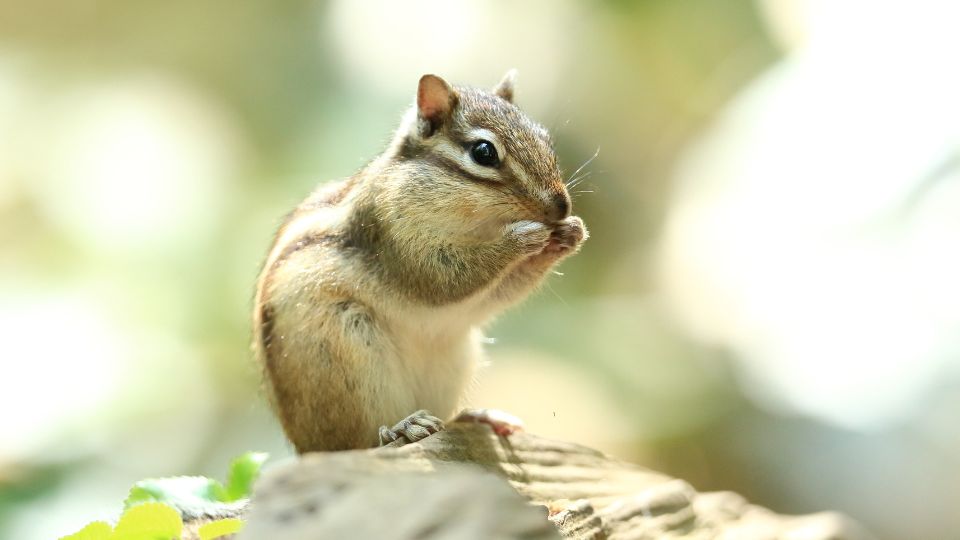
How do you get rid of chipmunk burrows?
The burrows that chipmunks create can be damaging to your home and yard. They can cause structural damage to structures such as driveways, patios, stairs, and more. Their deep holes can ruin part of your home’s foundation.
Chipmunks will eat from your garden, chewing on vegetables, bulbs, fruits, and other plants. They will destroy flower beds while foraging for food and digging holes.
If you have chipmunk burrows in your yard, filling them with dirt will not help, as chipmunks will dig through them again.
However, you can fill the holes with a mixture of soil and fine gravel or used cat litter. The gravel will be more difficult for chipmunks to dig through, and used cat litter will have a scent of predators that will deter chipmunks. You will need to pack the mixture tightly, so it is difficult to move.
Traps
Chipmunk traps are a way to catch chipmunks and relocate them. You can purchase a live trap and use baits such as peanut butter or sunflower seeds.
Once you catch a chipmunk, wear gloves for safety when relocating the critter. This is a humane trap as it won’t kill chipmunks but will still get them off your property.
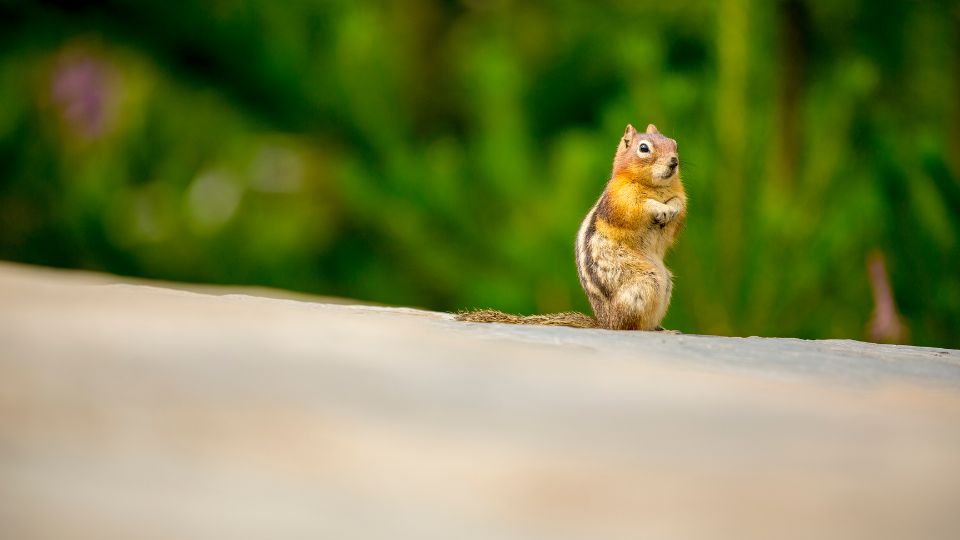
Repellents
Natural repellents that aren’t harmful to chipmunks are recommended to eliminate chipmunk burrows.
You can put mothballs around the holes to repel chipmunks.
Another odd but effective DIY idea is spreading human hair around the holes. The scent of humans will scare chipmunks, so putting hair in or around the holes may assist in ridding chipmunks.
Mechanical Repellents
Other options to scare away chipmunks are to install mechanical repellents around your home.
You can install motion sensor sprinklers. The blast of water will scare chipmunks. You can also use ultrasonic vibrations, emitting high-frequency noises that chipmunks dislike.
Reflective tape is another chipmunk repellent that can be hung around your house. The reflections and motion will startle chipmunks.
Barriers
Another way to reduce chipmunk presence on your property is to install L-shaped hardware cloth barriers. These should be installed underground so chipmunks struggle to dig around them.
This fencing can be put around any structure, including gardens, walkways, and patios. You can plant flower bulbs underneath hardware mesh cloth to prevent chipmunks from eating the bulbs.
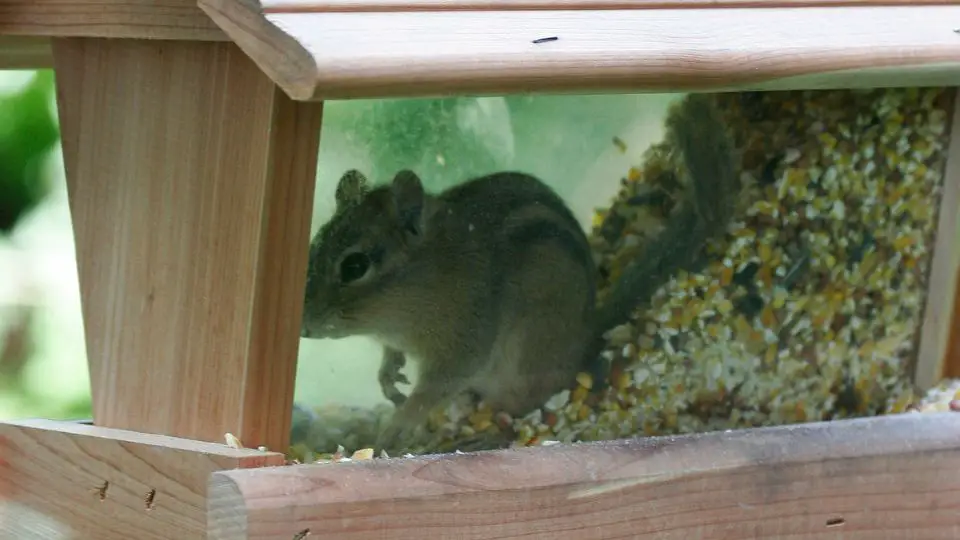
Landscaping
Keeping a tidy yard will eliminate chipmunk activity.
Remove piles of materials as chipmunks may use this as a burrowing site. Prune your trees and trim your bushes. Tidying your landscaping will make it harder for chipmunks to get into your home and make your yard less appealing.
Food Sources
Additionally, remove food sources to make your yard less attractive. Strategically place bird feeders in open areas and purchase squirrel-proof bird feeders. This type of feeder will make it difficult for many kinds of critters to feed on it.
You can also call a professional exterminator or pest control to help eliminate chipmunks. This is especially recommended if you have a chipmunk infestation.

